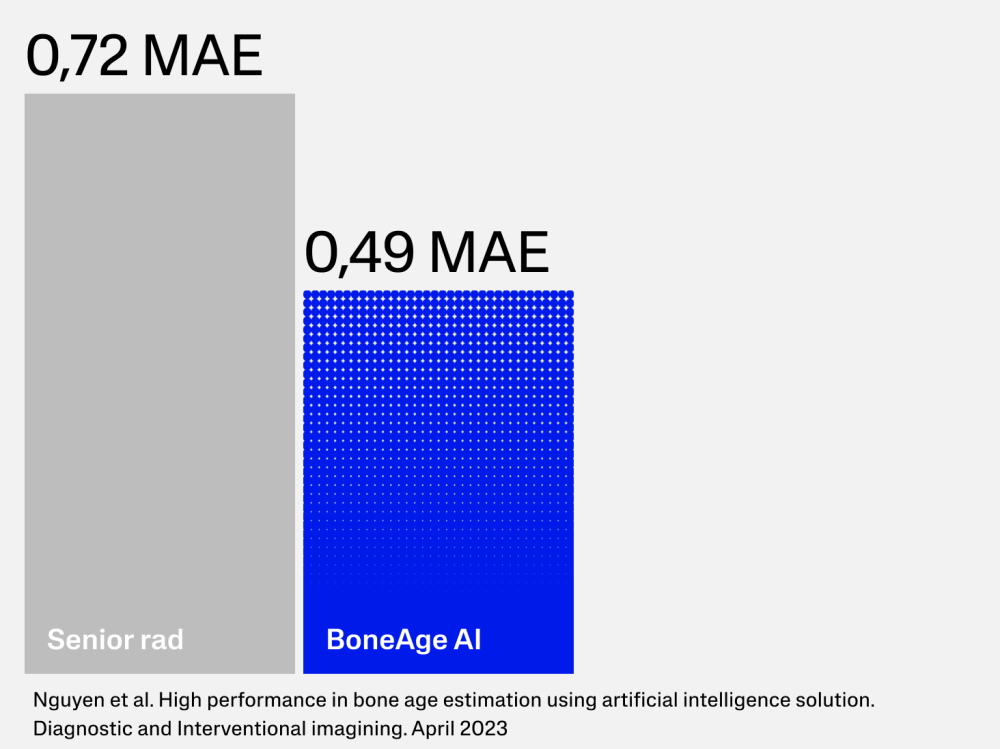High performances in bone age estimation using an artificial intelligence solution
Purpose
The purpose of this study was to compare the performance of an artificial intelligence (AI) solution to that of a senior general radiologist for bone age assessment.
Material and methods
Anteroposterior hand radiographs of eight boys and eight girls from each age interval between five and 17 year-old from four different radiology departments were retrospectively collected. Two board-certified pediatric radiologists with knowledge of the sex and chronological age of the patients independently estimated the Greulich and Pyle bone age to determine the standard of reference. A senior general radiologist not specialized in pediatric radiology (further referred to as “the reader”) then determined the bone age with knowledge of the sex and chronological age. The results of the reader were then compared to those of the AI solution using mean absolute error (MAE) in age estimation.
Results
The study dataset included a total of 206 patients (102 boys of mean chronological age of 10.9 ± 3.7 [SD] years, 104 girls of mean chronological age of 11 ± 3.7 [SD] years). For both sexes, the AI algorithm showed a significantly lower MAE than the reader (P < 0.007). In boys, the MAE was 0.488 years (95% confidence interval [CI]: 0.28–0.44; r2 = 0.978) for the AI algorithm and 0.771 years (95% CI: 0.64–0.90; r2 = 0.94) for the reader. In girls, the MAE was 0.494 years (95% CI: 0.41–0.56; r2 = 0.973) for the AI algorithm and 0.673 years (95% CI: 0.54–0.81; r2 = 0.934) for the reader.

Conclusion
The AI solution better estimates the Greulich and Pyle bone age than a general radiologist does.

